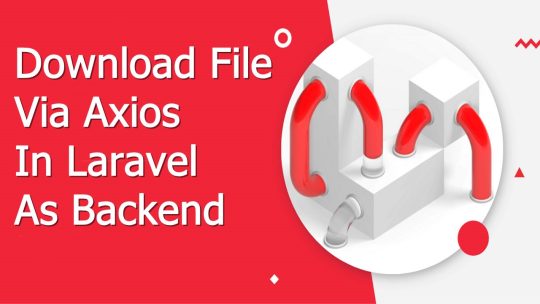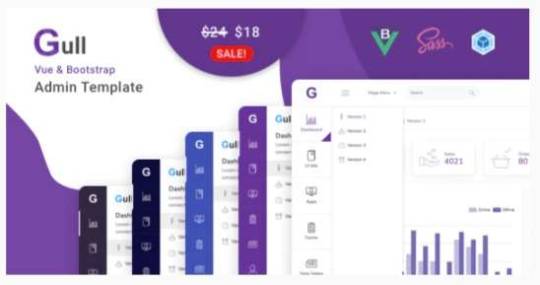#vue js download zip file
Explore tagged Tumblr posts
Text
Vue js download file via laravel API
Vue js download file via laravel API
Hello buddy, I hope you are doing well, in this article we will learn about how to download a pdf file via Vue js Axios and laravel as backed API. I understood that you search over enormous articles for this stuff but don’t get the working solution but we have one. The user doesn’t go bared hand from our website. We will follow the below steps to download the file via laravel API Write the…

View On WordPress
#how to download pdf in vue js#vue axios download file#vue download file from assets#vue download pdf from api#vue js download file from api#vue js download zip file#vuejs download file from server#vuetify download file
0 notes
Text
Parcel Port

Parcel is a web application bundler, differentiated by its developer experience. It offers blazing fast performance utilizing multicore processing, and requires zero configuration.
Highlands County Property Appraiser ⋅ 560 S. Commerce Avenue ⋅ Sebring, Florida Office Hours: 9:00 a.m. Monday - Friday ⋅ Phone: (863) 402-6659. Port Property has been making home happen for more than 25 years. A locally owned and operated business, we invest in, construct and manage the properties that southern Maine’s workforce call home. Our experience and expansive portfolio ensure exceptional quality and customer service for our residents. Property Search. How to search for permits on a property: Enter the house number and street address. (less is best) Click Submit. Next click on the Property KEY to bring up all permits on that property. Please note – Two addresses may show. Billed Amounts & Tax History. Search to see a 5-year history of the original tax amounts billed for a PIN. Once you search by PIN, you can pay your current bill online or learn additional ways to pay by clicking More Tax Bill Information on the next page. The Cook County Treasurer’s Office provides payment status for current tax years and the ability to pay online.
First install Parcel using Yarn or npm:
Yarn:
npm:
Create a package.json file in your project directory using:
or
Parcel can take any type of file as an entry point, but an HTML or JavaScript file is a good place to start. If you link your main JavaScript file in the HTML using a relative path, Parcel will also process it for you, and replace the reference with a URL to the output file.
Next, create an index.html and index.js file.
NB: Parcel converts JS assets to ES5, which won't run in in the context of a <script type='module'> tag, so just use plain <script> tags with no type attribute in your source HTML.
Parcel has a development server built in, which will automatically rebuild your app as you change files and supports hot module replacement for fast development. Point it at your entry file:
Now open http://localhost:1234/ in your browser. If hot module replacement isn't working you may need to configure your editor. You can also override the default port with the -p <port number> option.
Use the development server when you don't have your own server, or your app is entirely client rendered. If you do have your own server, you can run Parcel in watch mode instead. This still automatically rebuilds as files change and supports hot module replacement, but doesn't start a web server.
You can also use createapp.dev to create a Parcel project in the browser. Select the features you need such as React, Vue, Typescript and CSS, and you will see the project being generated in real-time. You can use this tool for learning how to set up a new project and you can also download the project as a ZIP-file and get started coding instantly.
Multiple entry files
In case you have more than one entry file, let's say index.html and about.html, you have 2 ways to run the bundler:
Specifying the file names:
Use tokens and create a glob:
NOTE: In case you have a file structure like this:
Parcel Portal
Going to http://localhost:1234/folder-1/ won't work, instead you will need to explicitly point to the file http://localhost:1234/folder-1/index.html.
Building for production
When you're ready to build for production, the build mode turns off watching and only builds once. See the Production section for more details.
Adding parcel to your project
Sometimes it's not possible to install Parcel globally e.g. if you're building on someone else's build agent or you want to use a CI to build your project programmatically. In this case, you can install and run Parcel as a local package.
To install with Yarn:
To install with NPM:
Then, add these tasks scripts to your project, by modifying your package.json:
Then, you will be able to run it:


Help us improve the docs
Us Mail Parcel Post
If something is missing or not entirely clear, please file an issue on the website repository or edit this page.

1 note
·
View note
Text
Gull Admin Templates Review - Vuejs & HTML Admin Dashboard Template

About Gull Admin Templates
Gull – Vue is a modern next generation VueJS Admin Dashboard Template which is Feature Rich, Responsive and Easy To Customize. Gull-vue is Pure Vue JS Admin Dashboard Template. No Jquery Dependancy. Gull-vue is built on top of VueCli, Vue,Vuex,sass And BootstrapVue Component. Its Comes With four Attractive Dashboard, five apps, 200+ Widgets, Lots of Charts, UI Components , Two Different Layouts, LIght version, and Dark Version.

Gull Admin Templates is RTL Supported. It can be used for building all kind of Cross-platform Application and Web application backends like custom admin panel, admin dashboard, accounting software, project management, chat application, eCommerce backends, CMS, CRM, ERP or SAAS. Gull provides you all the UI to input and visualize/output large and small datasets. Buy Demo Themes Basic Details Themes Name GullAvailable Store ThemeforestThemes Type Admin TemplatesGutenberg SupportYesCompatible BrowsersIE11, Firefox, Safari, Opera, Chrome, EdgeColumns Support 4+Layout ResponsiveMobile Friendly Yes DocumentationClick Here To View DocumentationThemes Demo Click Here To View Themes Demo
How To Buy Gull Admin Templates From Theme Store
First StepIf You Want Buy Themes From Themes forest Market You Need To First Login Or Register Second Step After Register Or Login Go To Shop At Themes forestThird Step Find Your Suitable Themes From Variety Of Available Themes At Themes forest Fourth StepOnce You Selected Your Themes Click On Buy Button At Themes Forest Fifth StepMake Your Payment From Various Of Payment Mode Available At Themes forest . Final Step Once Payment Successfully Done . You Will Redirect At Thank You For Your Purchase’ Screen . Now Everything Done . From My Account Anytime To View Your Purchase Details, And Download Your Theme Or Its Updates. How To Install Gull Admin Templates Review The normal installation method is done via your WordPress Dashboard area. From your ThemeForest Downloads Screen, click the Download button next to Gull. Select All files & documentation.On your computer, unzip this package you've just downloaded. Within, you'll find a file titled "Gull.zip". This is the theme file.In your WordPress Dashboard, navigate to Appearance > Themes.Click the Add New button and then click the Upload button.Select the "Gull.zip" file and click Upload.Once you've installed Gull, click the Activate button.. Other Features: Minimal, Intuitive and Fully Responsive Design(compatible with major browsers, tablets and phones)BootstrapVue UI Library4 Dashboard versionsDark & Light VersionLanguage SupportHand Crafted UiKits(Buttons,badge,cards,accordion,list ETC ..)DatatablesList ViewApp TourThumb List View Main Features: Pure Vue Js: The Vue Uses Vue Cli,vue router,Vuex and BootstrapVue .No JQuery Full SASS support: The implements bootstrap 4 sass. Styles and custom schemes are written in sass. Prebuilt apps: The has pre made apps(Invoice Builder, Chat, Inbox,Contact). Customizable SASS color schemes: Customize or create your own color scheme by changing the sass color variable’s value or creating new color scheme file. Data Table: Data table displays a set of data in clean table format with front-end paging options. User can search and sort data. Form Layouts and elements: Horizontal & verticle form layouts with all necessary form inputs and elements. Firebase Authentication: Gull Use Firebase For Authentication by Default Charts: Gull uses echarts/ApexCharts for data visualization. All necessary and common echart options/configurations are written in different file. Gull Admin Template The Gull admin template is built on the BootstrapVue UI library, and offers over 250 UI elements to build your admin panels. It has full RTL support, and it's ready to be translated as well. It supports any kind of backend use case from eCommerce backends to CMS. It comes with a bunch of different prebuilt apps like an invoice builder or a chat as well as versatile datatables & list views.

Easily customizable Reflect your personality! They make sure you can modify the look of Looper by touching just two SCSS files (even one). If you want to go deeper, don’t worry! Each component is separated in their own file so you can modify it without fear. Support Got a question about Looper? I’m here to help in any way They can. Just fill support form bellow and I’ll get back to you shortly: Just hit Contact Seller button on right panel in this page for Pre-sales questions.For technical support, please logged in to your account go to Purchases > Click the Order # > Get Support Read the full article
0 notes
Text
Getting Acquainted With Svelte, the New Framework on the Block
For the last six years, Vue, Angular, and React have run the world of front-end component frameworks. Google and Facebook have their own sponsored frameworks, but they might leave a bitter taste for anyone who advocates for an open and unbiased web. Vue is another popular framework that has multiple sponsors, but isn’t run by a single corporation, which may be attractive to some folks.
There’s another player in the framework space that’s gaining attention and operates very much in the same spirit as Vue as far adopting an open MIT license: Svelte.
Svelte has been covered here on CSS-Tricks before, like Ollie Williams’ excellent overview of how it can be used to write more convenient, component-based CSS. This article is going to zoom out a bit and provide a little more context about Svelt, as well as how it differentiates itself from other frameworks, and how to implement it in your own projects.
What makes Svelte different?
I can confidently say that Svelte has been the easiest JavaScript component library to learn and start putting to use in a productive way.
— Jeff Delaney, from Svelte Realtime Todo List with Firebase
OK, so Svelte is a JavaScript component library. But so is React. And Angular. And Vue. What makes Svelte stand out from the bunch?
Svelte is trying to do a few things that are different from the rest:
All the code is compiled ahead of time.
There is no virtual DOM.
CSS scoping is baked in.
Let’s break those down a bit because they significantly distinguish Svelte from other front-end frameworks.
All the code is compiled ahead of time.
Svelte is a compiler, meaning that the code in Svelte files gets converted from an easier-to-write hybrid language that mixes HTML, JavaScript, and CSS into lower-level optimized JavaScript, HTML, and CSS files.
This is very similar to the way C# gets compiled down to bytecode, or how Typescript compiles down to JavaScript. But where traditional compilers tend to go down to one language, Svelte mixes all three.
This makes writing code a lot more flexible, and benefits the client (web browser) as the computation is done when the application is built, not on every browser when the web app is visited.
There is no Virtual DOM.
A DOM (or Document Object Model) is an interface that defines the logical structure of a webpage. It takes HTML and converts it to a structure that can be manipulated and accessed. Chris has a classic post that thoroughly explains it.
The Virtual DOM extends the concept of a DOM by creating a “second” DOM in memory. Like the DOM, this is manipulated and accessed by traditional frameworks (e.g. Angular, Vue, and React). At build, this second “virtual” DOM gets consolidated with the actual DOM, allowing the UI to render.
And what about the Shadow DOM? Well, the Shadow DOM is technically part of the “real” DOM, just in the shadows. As such it is a great tool for isolating chunks of code that don’t leak into or conflict with other elements on the page — a little bit like (but at the same time almost nothing like) an iframe. The shadow DOM is sorta the crux for most component-based front-end frameworks because they leverage the siloed nature of the Shadow DOM to serve specific code to specific elements.
While that isn’t exactly a key selling point of Svelte, it is possible to work with the Shadow DOM experimentally. The Shadow DOM hasn’t really quite caught on in progressive web practices, which is a shame, and probably due to the confusion between drafts and lack of support from IE and Edge.
So, where am I going with all this? The difference between Svelte and other JavaScript frameworks is the lack of a Virtual DOM. That’s important because it contributes to faster apps — faster than frameworks using a Virtual DOM. Yes, the Virtual DOM can be super fast because it only updates parts of the DOM when needed, but as applications grow, the impact of a duplicate DOM stored in memory can have an overall negative impact on performance.
Svelte takes a different approach and does a lot of these heavy calculations at build time. All that heavy lifting in advance, which allows Svelte to surgically insert changes only where needed.
CSS scoping is baked in.
Svelte has built-in styling, which is essential in other modern frameworks. The different between CSS in Svelte and CSS in other frameworks is that Svelte takes the CSS from each component and spits it out to a separate CSS file on build.
A personal gripe I have with most CSS-in-JS approaches is that it seems like an over-engineered solution. Svelte’s approach keeps things lean, vanilla, and encapsulated — while keeping everything where it should be.
For those who love preprocessors, there are plugins, whether it for Sass, Less or Gulp. But since Svelte is still in its infancy, I would recommend using plain ol’ CSS with a minified CSS framework of your choice so you can utilize Svelte’s handy dandy component scoping.
You could just as easily keep to your usual styling preferences and completely forgo Svelte’s CSS builder. However, I’d argue that is a massive shame, as Svelte’s solution has been extremely clean and enjoyable, at lease in my experience. But anyone who has to work with IE11 (😬) and even older browsers will know that normalizing styles is a must. This is a good place to stop and check out Ollie’s post because he dives much deeper into Svelte’s styling features and advantages.
How Svelte stacks up to other frameworks
We just looked at what how Svelte has a different approach for compiling, interacting with DOM and writing CSS. You might be wondering: how does Svelte compare to other popular frameworks?
There are plenty of comparisons already out there, but suffice to say that Svelte is pretty darn fast. But speed isn’t the only basis for comparison. Instead, let’s do a side-by-side that looks at a broader overview in a format much loved by the development community: a table!
SvelteVueReact Angular (2+) What is it Compiler Framework Framework Framework First Commit Nov. 16, 2016 Jul. 29, 2013May 24, 2013Sep. 18, 2014 Backing Open source Multiple Sponsors Facebook Google Community¹Small Large Massive Large Satisfaction288% 87% 89% 38%
Svelte is in a strong position considering its late entrance and small community. Developer satisfaction is high, while the big three have been seeing recent declines. The Svelte community is small, but growing, and the code is open source which is a huge plus for the overall web community.
Let’s look at an example of using Svelte
I hope that I have convinced you that Svelte is worth at least a try. If so, let’s fire up the terminal and try a real-world examples of an everyday use case: implementing the Intersection Observer. If you’ve ever run a Lighthouse report, it may have been shouted at you for not using passive scroll events. That may be the most boring sentence I have written in my life, but it’s scores points for performance and isn’t overly complicated to do with the Intersection Observer in Svelte.
Let’s skip all the installation and setup stuff because we can avoid it with REPL, the online editor Svelte uses to demonstrate the framework on its site. The standard “Hello world” boilerplate is in there. Go ahead and download the ZIP file of the app, in the upper-right corner of the screen.
Now, unzip the file and cd into the folder from the terminal and run npm -i to initialize the project. Once that’s done, do npm run build and you’ll get a copy of your lightweight miniature Svelte “Hello, world!” app.
Now we can get into the actual task of adding the IntersectionObserver.
First, we import the code that has already kindly been written by the Svelte team. It’s in the source code of the svelte.dev git repo (the inner cogs of which make for fascinating reading).
<script> import { onMount } from 'svelte'; export let once = false; export let top = 0; export let bottom = 0; export let left = 0; export let right = 0; let intersecting = false; let container; onMount(() => { if (typeof IntersectionObserver !== 'undefined') { const rootMargin = `${bottom}px ${left}px ${top}px ${right}px`; const observer = new IntersectionObserver(entries => { intersecting = entries[0].isIntersecting; if (intersecting && once) { observer.unobserve(container); } }, { rootMargin }); observer.observe(container); return () => observer.unobserve(container); } function handler() { const bcr = container.getBoundingClientRect(); intersecting = ( (bcr.bottom + bottom) > 0 && (bcr.right + right) > 0 && (bcr.top - top) < window.innerHeight && (bcr.left - left) < window.innerWidth ); if (intersecting && once) { window.removeEventListener('scroll', handler); } } window.addEventListener('scroll', handler); return () => window.removeEventListener('scroll', handler); }); </script> <style> div { width: 100%; height: 100%; } </style> <div bind:this={container}> <slot {intersecting}></slot> </div>
Stick this in a file called IntersectionObserver.svelte in a src/components folder. Then, reference it from the main Svelte file: App.svelte.
import IntersectionObserver from "../components/IntersectionObserver.svelte";
Now that we have the Intersection Observer available as a component, we can wrap other elements with it.
<IntersectionObserver let:intersecting top={400}> {#if intersecting} <section> This message will Show if it is intersecting </section> {:else} <section> This message won't Show if it is intersecting </section> {/if} </IntersectionObserver>
That’s really it! You can see how the Intersection Observer component allows us to use <IntersectionObserver> like a wrapper and define where the intersection should trigger, which is 400 pixels from the top in this example. As a reminder, this is all being exported as vanilla JavaScript! Super performant, no funny business. We’re sandwiching JavaScript and HTML together which is cool because we can see what the Intersection Observer is directly affecting, leaving no ambiguity and without being penalized for performance.
The OnMount function is necessary to tell Svelte that this code needs to run within the browser, as the Intersection Observer can’t be figured out ahead of time.
We’ll need to add some styling so that we can experience the observer in action, and we can do that directly in your App.svelte file. This might look super familiar if you have worked with any of the other front-end frameworks:
<style> .somesection { display: flex; align-items: center; justify-content: center; width: 100%; height: 100vh; } .somesection.even{ background: #ccc; } .content{ text-align: center; width: 350px; } </style>
Finally, we can copy and paste our Intersection Observer element four times to create more intersections. That gives us a mini web app that reactively adds and removes content as it comes into view — perfect to use with media, like lazy-loading. Check out a demo of the final result and be sure to crack open DevTools to see the Intersection Observer
Some final thoughts
My personal recommendation is to give Svelte a try. We’ve only scratched the surface of the framework in this article, but having converted my personal website to Svelte, I can confidently say that it is a pleasure to work with. It is performant, has a brilliant VSCode linter, and best of all, is easy to use. It may be small and new on the block, but I have a keen feeling that it is the relief from bloated “Goliath” frameworks, the “David” that frontend-ers have been looking for.
So should you use Svelte in a real project? Comparing risk and reward definitely comes into play. The community is smaller than other frameworks, meaning you’re likely to find less support and fewer tutorials to guide your along. At the same time, Svelte is in its third generation, meaning most of the gremlins should have been driven away, leaving a lean and reliable framework.
As with anything new, common sense rules, try it out with something non-commercial, take it for a spin, and see how you go.
Is there anything else? Funny you should ask! There are two co-projects that live in the Svelte Ecosystem: Sapper and Native. Sapper is a framework that utilizes Svelte for building full web applications, including routing, service workers, and all the good stuff you need to get started. I have used it to rebuild my personal website, and so far, I am a fan. Svelte Native is the most experimental of the Svelte projects, a NativeScript mobile app builder that utilizes Svelte under the hood. I confess that is where my knowledge on the subject ends. Luckily, it has a website with further information.
What do you think? Have you given Svelte a try? Do you think it stacks up to other frameworks? Let’s discuss it in the comments!
Based on a mix of Github Contributions, NPM Downloads and StackOverflow topics
State of JS review 2019
The post Getting Acquainted With Svelte, the New Framework on the Block appeared first on CSS-Tricks.
Getting Acquainted With Svelte, the New Framework on the Block published first on https://deskbysnafu.tumblr.com/
0 notes